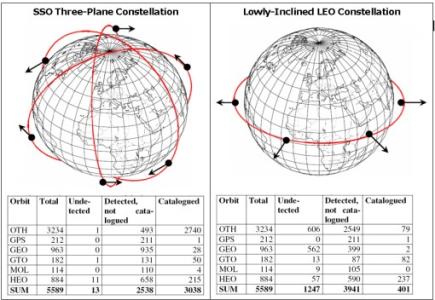SSA RADAR AND OPTICAL SENSOR DATA FUSION FOR ORBIT DETERMINATION OF GTO AND GEO OBJECTS
Programme
GSTP
Programme Reference
G532-003GR
Prime Contractor
GMV AEROSPACE AND DEFENCE, SA
Start Date
End Date
Status
Closed
Country
Spain

Description
The main conclusions of the project are:
- The successful observation campaign performed during this project proves that it is possible to track HEO objects using optical (OGS) and radar (TIRA) means. Furthermore the observation campaign included some innovative and challenging concepts for this type of campaigns: firstly TIRA acquired interleaved observations whereas continuous tracking has always been performed from this sensor and secondly, OGS and TIRA were scheduled together for observing multiple objects whereas up to now, when they have been scheduled together, the plan was only focused on one single object.
- However, some tracking errors during TIRA campaign occurred and were reported. Moreover, angular biases per pass in optical observations and range biases per pass in the radar tracking have been detected.
- It was possible to perform orbit determination based on the fusion of the optical and radar data.
- Orbits could have been determined for all the scenarios, except for those involving XMM radar data using NAPEOS-BAHN. The bad results in the mentioned OD are mainly caused by the used tracking mode (open-loop) and the error that occurred during its tracking (loss of track).
- Orbits determined from data fusion (optical and radar data) are significantly more accurate than the ones determined only considering optical or radar data.
- Using just optical measurements give an orbit whose cross-track component is the best fitted, whereas using only radar tracking results an orbit whose in-plane component is the best fitted one.
Application Domain
Space Science
Technology Domain
9 - Mission Operation and Ground Data Systems
Competence Domain
8-Ground Systems and Mission Operations
Initial TRL
TRL N/A
Target TRL
TRL N/A
Achieved TRL
TRL N/A
Public Document
Final Presentation
Executive Summary
